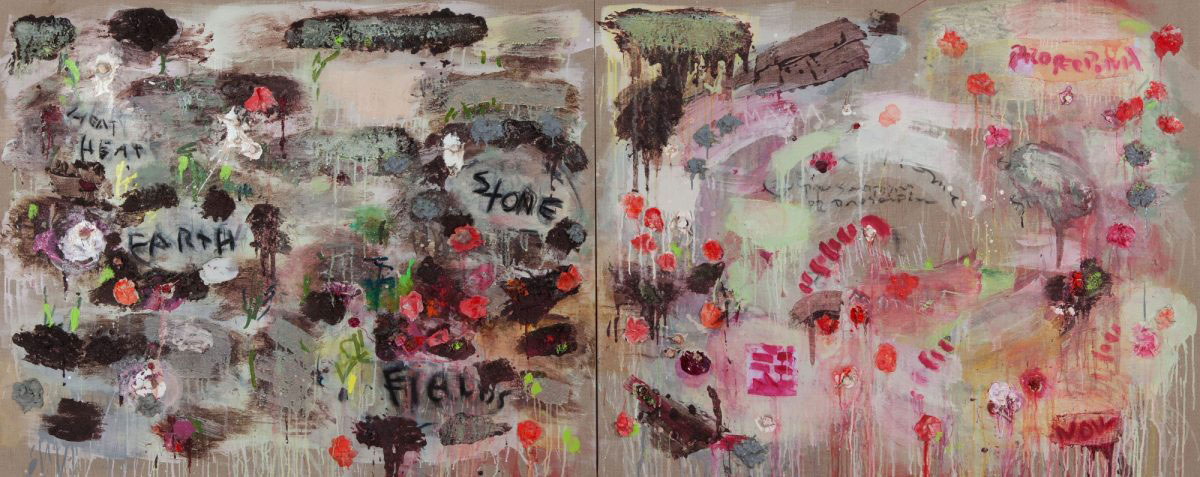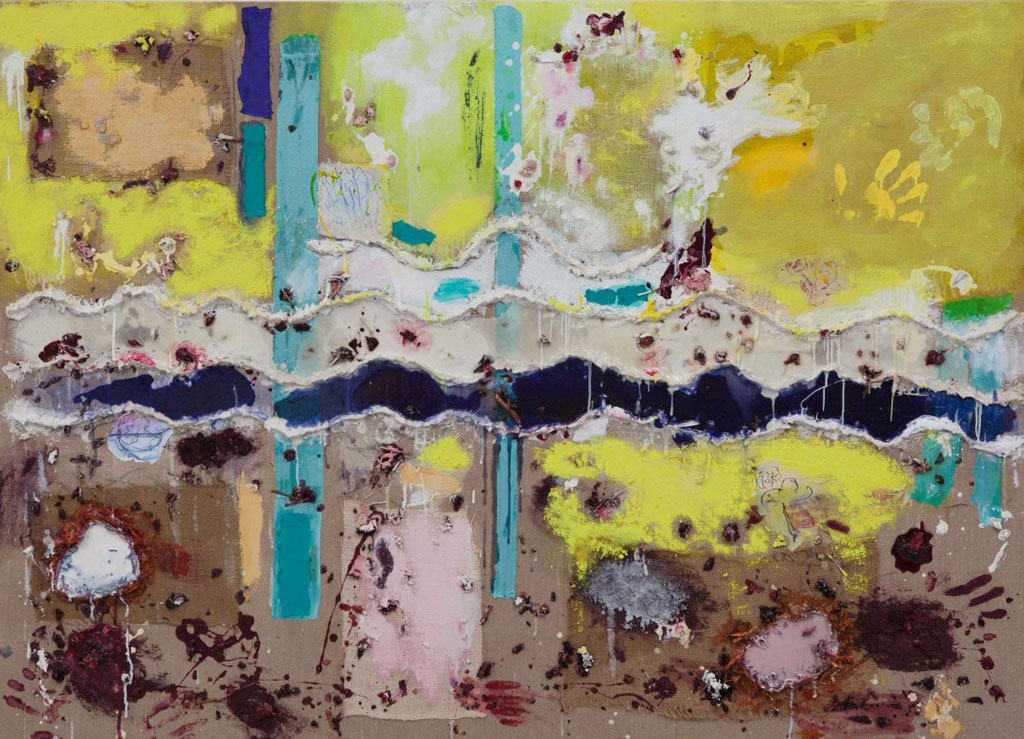ART-PRESENTATION: Joan Snyder-Rosebuds & Rivers
 Joan Snyder first gained public attention in the early 1970s with her gestural and elegant “stroke” paintings, which used the grid to deconstruct and retell the story of abstract painting. By the late 70s Snyder abandoned the formality of the grid. She began to more explicitly incorporate symbols and text, and the paintings took on a more complex materiality. Often referred to as an autobiographical or confessional artist, her paintings are essentially narratives of both personal and communal experiences. Through a fiercely individual approach and persistent experimentation with technique and materials, Snyder has extended the expressive potential of abstract painting and inspired generations of emerging artists.
Joan Snyder first gained public attention in the early 1970s with her gestural and elegant “stroke” paintings, which used the grid to deconstruct and retell the story of abstract painting. By the late 70s Snyder abandoned the formality of the grid. She began to more explicitly incorporate symbols and text, and the paintings took on a more complex materiality. Often referred to as an autobiographical or confessional artist, her paintings are essentially narratives of both personal and communal experiences. Through a fiercely individual approach and persistent experimentation with technique and materials, Snyder has extended the expressive potential of abstract painting and inspired generations of emerging artists.
By Efi Michalarou
Photo: Blain|Southern Gallery Archive
Joan Snyder’s solo exhibition “Rosebuds & Rivers” includes a group of monumental triptychs and diptychs alongside smaller-scale works. It offers an insight into the experimentation and visual language for which Snyder is celebrated. One of the pre-eminent artists of her generation, Joan Snyder made her breakthrough in the late 1960s with her “stroke” paintings (a body of abstractions developed from her experiments regarding the anatomy of a painting. She painted paint strokes and other dissected parts) gestures, drips and marks – and laid them over pencilled grids, using the structures as a basis from which to compose narratives. “At the time my idea was to study the anatomy of a stroke, isolating them and using them much like creating a symphony or a piece of music”. The desire to put in more, not less, to tell her stories led Snyder to break with the prevailing male-dominated abstract movements of Minimalism and Colour Field painting. She began to work from a loose grid to create mixed media paintings which she felt drew from a female sensibility. Building up surfaces with paint and organic matter, Snyder creates paintings that are narratives of both personal and shared experiences. In the largest work in the exhibition, “Fragments of a Soul” (2018), pieces of bark, herbs, glitter and scribbles on tiny pieces of paper form a saga of totem-like figures in a vast landscape. Chinese herbs and amber resin adorn the canvas of “Floating Soul” (2018), the artist describes adding scraps of paper with hidden notes as “almost performative” it became like the Wailing Wall for me, where I was making little notes and then pinning them on and just being caught up in that process”. Snyder’s paintings have a profound relationship with music. Music is often part of her process and informs the structure of her paintings. During concerts, Snyder makes preparatory sketches which are annotated and revised repeatedly. These sketches can exist for several years before she commits to working on canvas. “Rose & Vine” (2018) was conceived at a Philip Glass concert, where the repetition in Glass’ compositions inspired the artist to imagine how a painting of endless roses would appear. The inspiration for “Proserpina” (2013) comes from a Kate McGarrigle song about a mother who loses her daughter for a third of the year to Hades in the underworld. Ceres, her mother, searches in vain, turning the fields into stone and threatening to destroy the earth in her desperation to get her daughter back. Many of Snyder’s paintings originate from sketches, but not all. “Yellow Figure” (2018), is a work that happened spontaneously. Composed of three figures, the painting is part of a series of works, relating to a mother-daughter saga of her own.
Info: Blain|Southern Gallery, 4 Hanover Square, London, Duration: 4/4-11/5/19, Days & Hours: Mon-Fri 10:00-18:00, Sat 10:00-17:00, www.blainsouthern.com

